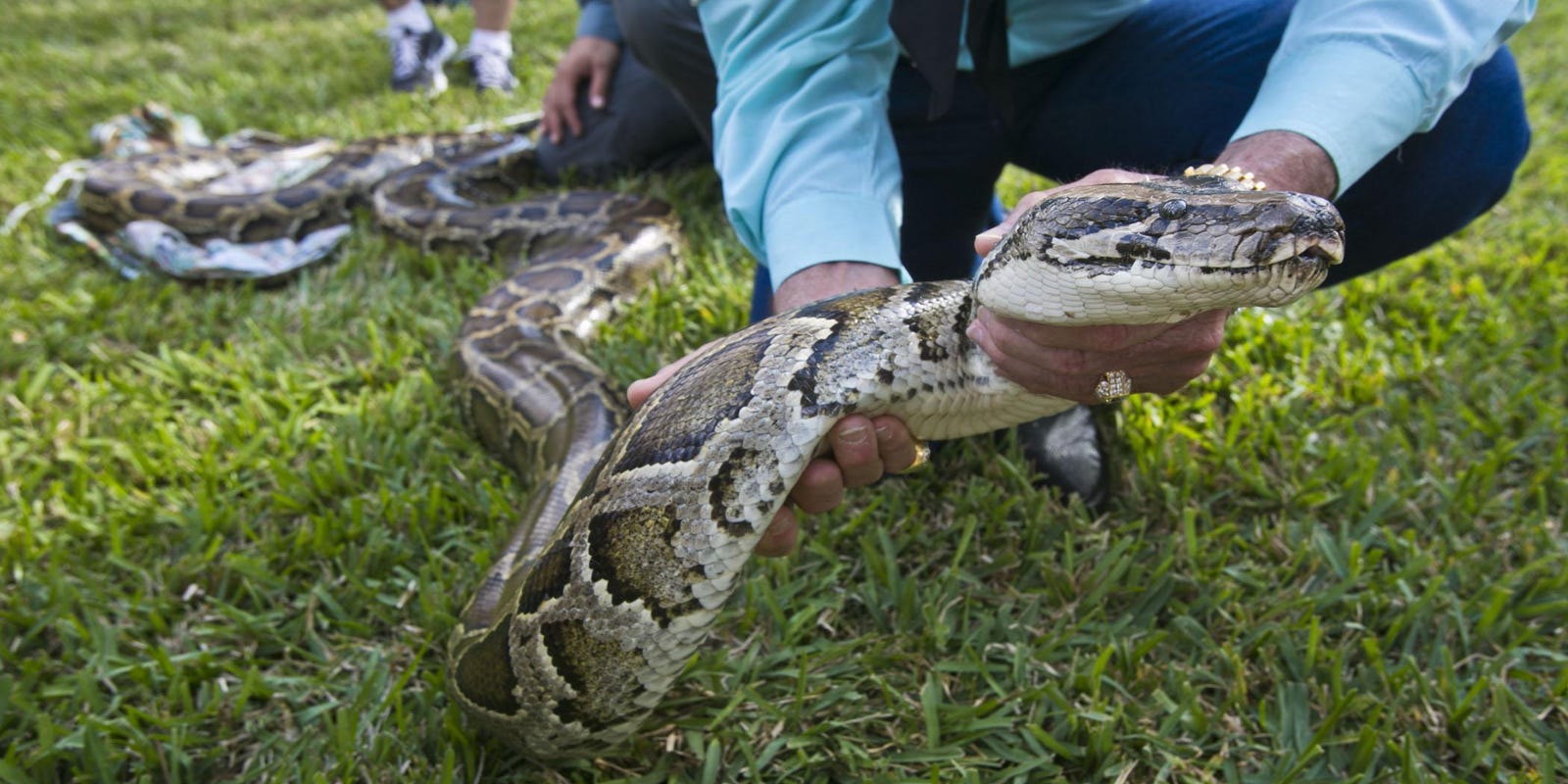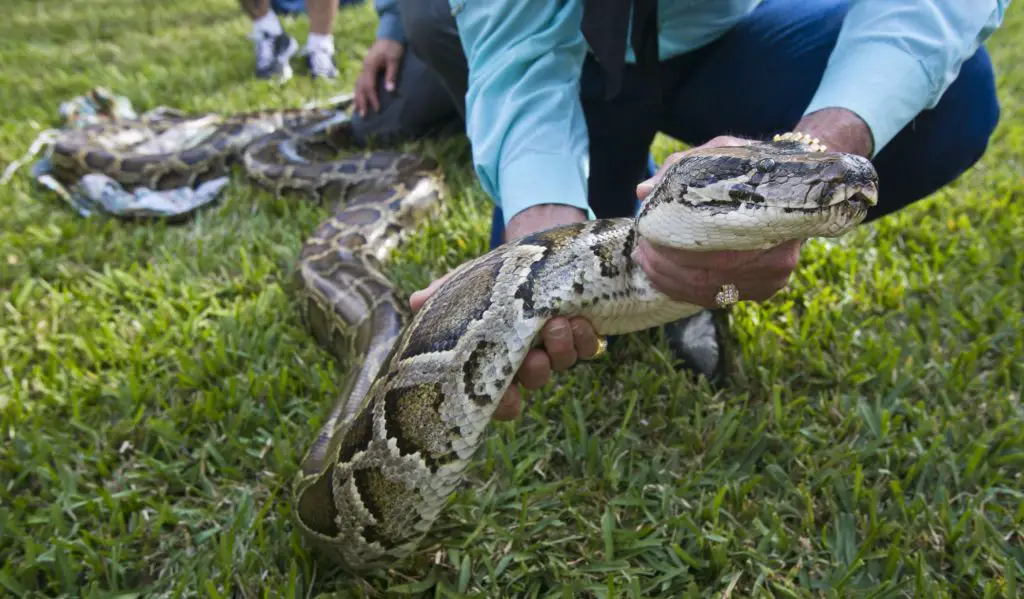Burmese pythons are one of the largest snakes in the world and are found in Southeast Asia. These non-venomous snakes have been known to grow up to 23 feet long and weigh over 200 pounds. While some may view them as a dangerous predator, others are curious about the potential culinary uses of Burmese python meat.
Despite their intimidating size and reputation as a predator, Burmese pythons are not only edible but also considered a delicacy in some parts of the world. However, the idea of consuming snake meat may be off-putting to some, raising questions about the safety, taste, and ethical implications of eating this reptilian meat. In this article, we will explore the various aspects of consuming Burmese python meat and whether it is a viable option for adventurous foodies.
Is Burmese Python Meat Edible?
Yes, Burmese Python meat is edible. However, it is not commonly consumed in Western countries. In Southeast Asia, snake meat is a delicacy and is believed to have medicinal properties. Before consuming snake meat, make sure it has been cooked thoroughly to avoid the risk of foodborne illness.

Is Burmese Python Meat Edible?
When it comes to exotic meats, Burmese python meat is a delicacy that has been gaining popularity in recent years. However, before trying this exotic meat, it is essential to know if it is safe to consume and what benefits it offers. In this article, we will explore whether Burmese python meat is edible and everything you need to know about it.
What is Burmese Python Meat?
Burmese pythons are one of the largest species of snakes in the world. They are native to Southeast Asia and are considered an invasive species in Florida. The meat of Burmese pythons is often described as tasting like chicken or alligator and has a texture similar to that of fish or pork.
Burmese python meat is usually marketed as a lean protein source and is high in omega-3 fatty acids. It is also a good source of essential nutrients such as iron, zinc, and vitamin B-12.
Is Burmese Python Meat Safe to Eat?
While Burmese python meat is safe to eat, there are some precautions you should take. Firstly, it is essential to ensure that the meat comes from a reputable source. Wild Burmese pythons may carry parasites and diseases that can be harmful to humans. Therefore, it is recommended to purchase the meat from a licensed dealer who sources their pythons from a controlled environment.
Secondly, it is important to cook the meat thoroughly to eliminate any potential bacteria or parasites. The meat should be cooked to an internal temperature of 165°F to ensure that it is safe for consumption.
Benefits of Eating Burmese Python Meat
Burmese python meat is a rich source of protein, with 100 grams of meat providing approximately 27 grams of protein. It is also low in fat, making it a good option for those watching their calorie intake. Additionally, Burmese python meat is high in omega-3 fatty acids, which are essential for maintaining heart health, reducing inflammation, and improving brain function.
Furthermore, Burmese python meat is a sustainable food source. As an invasive species, the population of Burmese pythons in Florida is rapidly increasing, and hunting them for meat can help control their population. Eating python meat also reduces the demand for other meats, such as beef and pork, which are known to have a significant environmental impact.
Burmese Python Meat vs. Other Meats
Compared to other meats, Burmese python meat is leaner, lower in fat, and higher in protein. It is also a good source of essential nutrients such as iron and zinc. When compared to beef or pork, python meat is a more sustainable option as it has a lower environmental impact and can help control the population of an invasive species.
However, it is important to note that Burmese python meat is not as widely available as other meats and may be more expensive. Additionally, some people may be hesitant to try it due to cultural or ethical reasons.
Conclusion
In conclusion, Burmese python meat is safe to eat and offers several health benefits. It is a sustainable food source and has a lower environmental impact than traditional meats. However, it is crucial to source the meat from a reputable dealer and cook it thoroughly to ensure its safety. While it may not be as widely available as other meats, it is worth trying for those who are curious about exotic foods.
Frequently Asked Questions
Here are some frequently asked questions about Burmese Python meat and its edibility.
Is Burmese Python meat safe to eat?
Yes, Burmese Python meat is safe to eat as long as it is cooked properly. However, it is important to note that Burmese Pythons can carry diseases, so it is recommended to avoid eating them if they come from areas affected by diseases such as avian influenza. Additionally, it is important to purchase Burmese Python meat from a reputable source to ensure that it is not contaminated.
When it comes to preparing Burmese Python meat, it is important to cook it thoroughly to an internal temperature of 165°F (74°C) to eliminate any potential bacteria or parasites. It is also recommended to remove any fat or connective tissue before cooking to improve the taste and texture of the meat.
What does Burmese Python meat taste like?
Burmese Python meat is often described as being similar to chicken or rabbit meat. It has a mild flavor and a slightly chewy texture. Some people also compare it to alligator meat. The taste and texture can vary depending on the age and size of the python, as well as how it is prepared.
Burmese Python meat is often used in traditional dishes in Southeast Asia, such as snake soup or stir-fry dishes. It can also be used as a substitute for other meats in recipes such as tacos or spaghetti sauce.
How is Burmese Python meat prepared?
Burmese Python meat can be prepared in a variety of ways, including grilling, frying, roasting, or boiling. It is often marinated before cooking to enhance the flavor. Some people also prefer to smoke the meat to give it a unique flavor.
When preparing Burmese Python meat, it is important to remove any fat or connective tissue before cooking to improve the taste and texture. It is also recommended to cook the meat to an internal temperature of 165°F (74°C) to eliminate any potential bacteria or parasites.
Where can I buy Burmese Python meat?
Burmese Python meat is not commonly found in grocery stores or restaurants in the United States. However, it can be purchased from some exotic meat markets or online retailers. It is important to purchase Burmese Python meat from a reputable source to ensure that it is not contaminated or illegally obtained.
Additionally, some states have regulations or restrictions on the sale and consumption of Burmese Python meat, so it is important to check local laws before purchasing or consuming it.
Are there any health benefits to eating Burmese Python meat?
Burmese Python meat is a good source of protein and is low in fat and calories. It also contains essential nutrients such as iron, zinc, and vitamin B12. However, it is important to note that consuming Burmese Python meat does not provide any significant health benefits over other sources of lean protein such as chicken or fish.
Additionally, as with any meat, consuming Burmese Python meat in excessive amounts can lead to health problems such as high cholesterol or heart disease. It is important to consume it in moderation and as part of a balanced diet.
Don’t Eat The BURMESE PYTHON Because…..
In conclusion, the question of whether or not Burmese python meat is edible is a complex one. While it is technically safe to consume, there are a number of factors that should be taken into consideration. These include the potential health risks associated with consuming meat from wild-caught animals, as well as the ethical concerns surrounding the hunting of an invasive species.
Ultimately, the decision to eat Burmese python meat is a personal one that should be made with careful consideration. For those who are interested in trying it, there are a number of recipes available that can help to make the meat more palatable. However, it is important to keep in mind that this is not a traditional food source for most people and may require some adjustment.
Overall, the debate over the edibility of Burmese python meat highlights the complex relationship between humans and the natural world. As we continue to grapple with issues of conservation, sustainability, and food security, it is important to approach these questions with an open mind and a willingness to learn from different perspectives.


